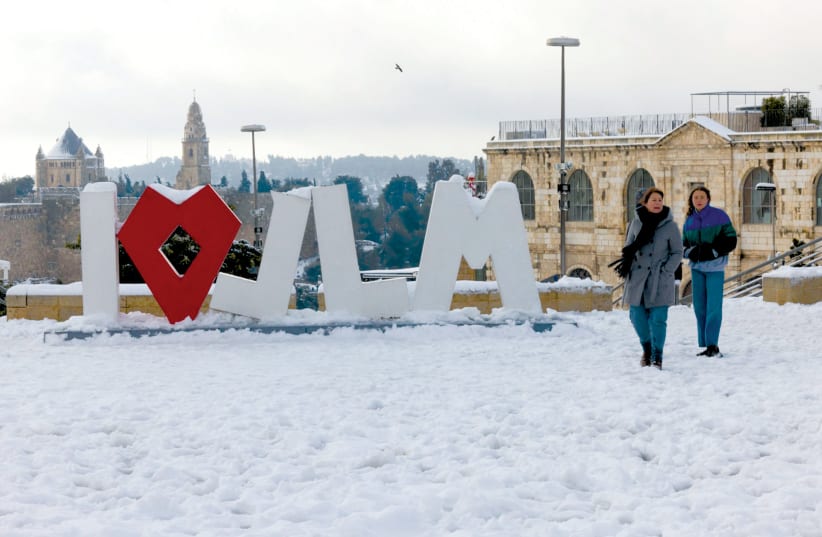Ever get into one of those “where were you when… ” nostalgia trips? One that springs to mind was trying to recall where one was when JFK was assassinated. For the under-60s the US president was shot in Dallas on November 22, 1963. A little later, in Britain, it was trying to recollect your circumstances when England won the soccer World Cup in 1966.
For Jerusalemites, say, over the age of 15 or so the seasonal sentimental trip down memory lane may very well hark back to the Great Snowfall of December 2013. Back then the white stuff just kept on flurrying and falling, nonstop for three whole days, with the city almost entirely shut down for five days. The Valley of the Cross, which was in full view of the fourth-floor balcony of our then-domicile, was a gorgeous expanse of virginal white. Mind you, the architect of our building might have considered using some more efficient insulating materials in our outer walls.
Still, we got through it, although we were reduced to waddling around like grizzlies, or astronauts, clad in two or three layers of body heat-retaining clothing and, unlike some of our pals elsewhere in the city, our power supply never failed.
The latter seemed to be the experience of the vast majority of Jerusalemites last week when a cold blast hit the city and brought with it around 20 cm. of snow. The white mantle settled on the thoroughfares, parks, gardens and wall tops and, most fetchingly, on tree branches. The seemingly incessant urban buzz was reduced to a magical hush periodically punctuated by the joyous cries of youngsters pelting each other with snowballs, or the muffled roar of a snowplow clearing the tarmac for motorists taking the family to Sacher Park for some snow frolics, or people just trying to go about their regular daily business, weather conditions notwithstanding.
And while much of the city took a 24-hour furlough including kids, after Mayor Moshe Lion merrily announced that all schools would be closed for the day – for once that had nothing to do with virus-related considerations – the municipality appeared to have its act together to keep Jerusalem turning over.
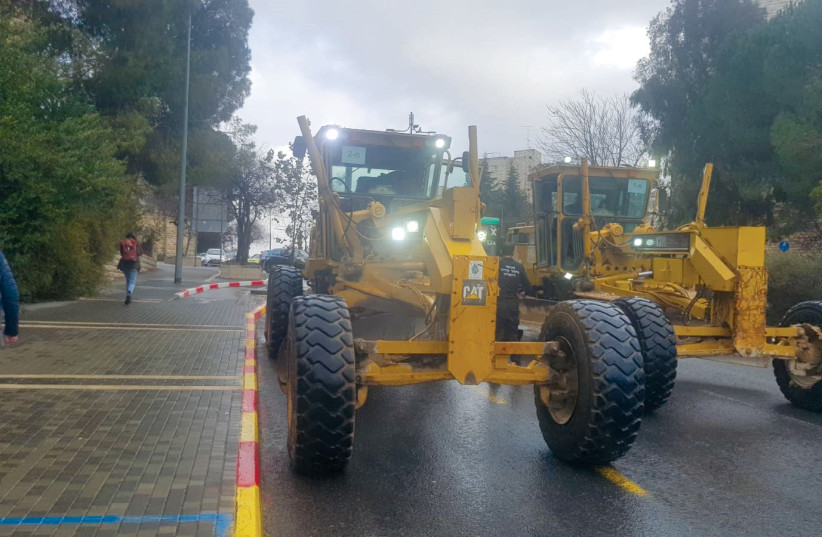

THERE WAS certainly no shortage of mechanical firepower at hand. The municipality figures released earlier this week note there were a whopping 250 snowplows on standby and active duty and, judging by the trip I made into town late on Thursday morning, the main arteries had been duly cleared.
The municipal Emergency and Security Division operated a snow logistics center and dispatched teams to patrol the city, track down and deal with hazards, and coordinate the various emergency and rescue units.
The municipal summary says that the snowplows and other heavy-duty mechanical apparatus were deployed across the city, to clear roads and garbage, with the latter totaling close to 300 tons on Thursday alone. For anyone with the health – and continuing existence – of Mother Earth high on their list of existential priorities that statistic will, no doubt, put the shape of our green-orientated modus vivendi into stark focus.
It appears this was something of a pan-municipality operation, with the City Improvement Department primed to respond to cries for help via the 106 call center. The report also says that the department cleared some 300 trees that fell in public and private spaces. Back in 2013 toppled trees knocked out power lines all over the city but, thankfully, this time around there was less of that following the municipality’s investment in burying electricity cables below ground. Unfortunately, it seems that did not include Reuven Milon’s end of Beit Hakerem.
“A large cactus fell on our path and blocked the steps to the sidewalk,” says the 93-year-old photographer. “It was a catastrophe. I didn’t see any improvement in the way the municipality handled the situation compared with the snowstorm of 2013.
“I was a lot younger then and could manage better on my own. I don’t know what the municipality did in other places around the city but their teams certainly didn’t get to my area.”
STILL, IT must be said that the local authority had its hands full, and then some. The official report says that the 106 call center received some 5,500 queries starting from Wednesday morning which, they say, is five times more than the regular volume. The reports add that “half of the calls were about taking care of hazards, and the rest were mainly requests for information about things like traffic arrangements, education and public transport, and requests for personal assistance.”
The Welfare Department, I am told, sent out patrols to find and help people who were sleeping outdoors and relocated some to shelters. It also ran community-based emergency facilities and supervised teams of volunteers and employees.
But it was not just about survival mode. The municipality says there was some merrymaking laid on too. “There were snow festivities in the city’s main parks, and in Sacher Park, with actors and professionals in costumes who mingled with crowds, gave out brand scarves, gloves, and hats, and ran fun competitions with the public,” the report reads.
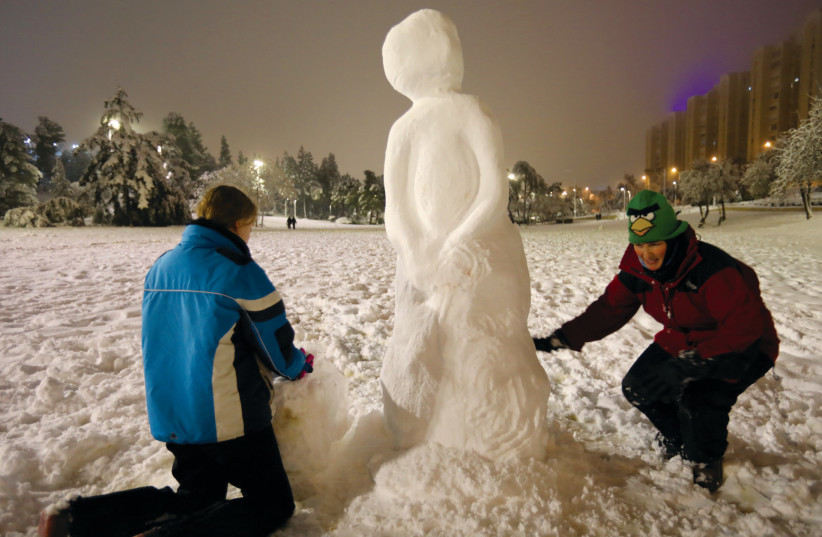

The municipality’s website was also well utilized, with 132,000 hits during the week, and 22,000 locals following developments on the municipal emergency website uploaded on Wednesday morning.
Meanwhile, Mayor Lion trumpeted the municipality’s performance in the extreme wintry conditions, saying City Hall had “learned from prior events.” He praised “all the municipality’s personnel, who worked with devotion and professionalism, in the field and at the headquarters, for the benefit of Jerusalem residents.”
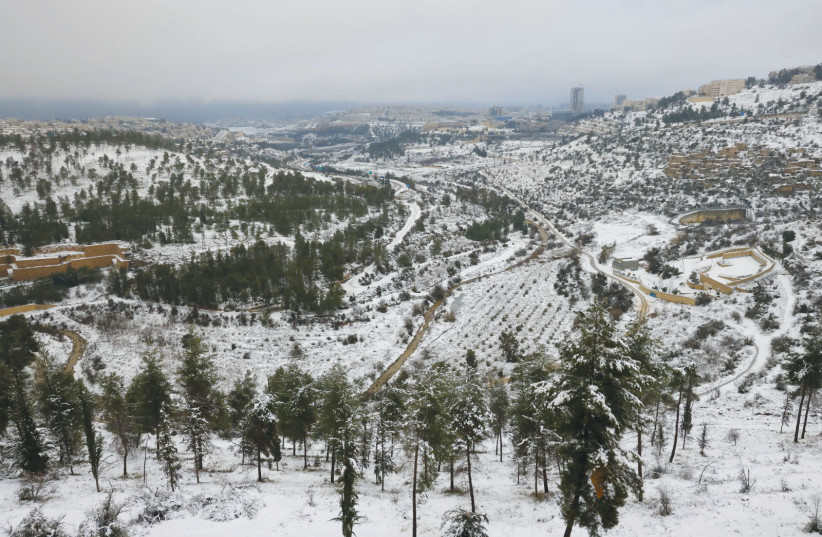

Lion, however, did note there is still room for improvement. “We will draw conclusions from this event too, and we will act to implement them ahead of future snowfalls.” He also called on locals and visitors to the city “to continue exercising caution, and to enjoy the enchanted snow ambiance over the weekend.”
YES, IT was “enchanted,” but could the municipality have really handled the situation any better? Has it made strides since 2013? Oren Lotan is not so sure.
“I think the principal criticism has not changed. They free up the main roads for cars by chucking all the snow and branches onto the sidewalk, and then the sidewalks are unusable for several days.”
Lotan, a veteran Jerusalemite, feels the municipality needs to provide motorists and pedestrians with a similar level of service. “That is not the correct order of priority. Effectively you are hindering people who have any mobility issues and are not capable of stepping over piles of snow or branches. Sidewalks should be passable in the same way that roads should be open.”
Itzik Nidam, head of the Operations Administration, recognizes the problem but says his teams did their utmost to keep pedestrians happy too. “Naturally, when you plow snow off the roads it ends up on the sidewalk. That is inconvenient. That was on Thursday morning. But we worked through the night to free up the sidewalks during the day on Thursday. And on Friday we operated more heavy tools, to free up the sidewalks and junctions, to allow cars and pedestrians to move freely around the city.”
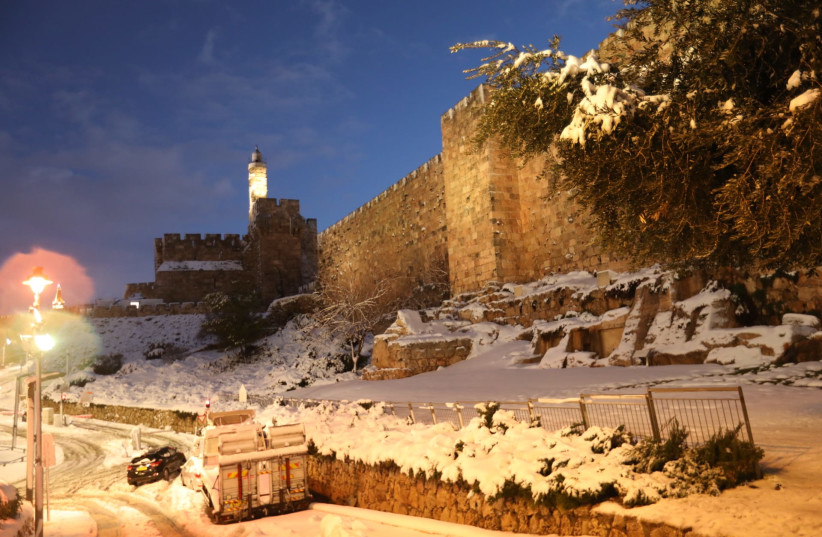

Still, the accent seemed to be very much on keeping the motorized traffic moving. “All the roads were free of snow on Thursday. That is an unprecedented achievement for snowy weather in Jerusalem.”
Kiryat Hayovel resident Ben Dekel echoed that sentiment. “When I left home on Thursday, around 4 p.m., all the roads were clear. That was fine.”
Then again, he felt something might have been done about the deteriorating aesthetics. “They shoved the snow to the sides and piled it high. And now, days later, it is still there and getting uglier all the time.” To paraphrase an oft-cited sage observation by Abraham Lincoln, clearly, you can’t please all the Jerusalemites all the time.
Nidam praises his boss for his “wise leadership.” “Moshe Lion made some good decisions which helped us handle the situation – like deciding to close the schools on the following day. That was a clever decision. By doing that, you allay uncertainty.”
Part of that was thanks to some of the technological advances made since 2013. “If you tell someone in America it is going to snow on a particular day they will ask you when it is going to start,” says Nidam. “They have had the ability to pinpoint, more or less, the times of the changes in weather conditions. We now have that too. The people at the Meteorological Center here did a great job for us.”
Things were different eight or so years ago. In fact, Nidam attributes the municipality’s inability to handle the situation in December 2013 to the paucity of precise data, “In 2013 the weather forecast messed up, big time.”
DISRUPTION TO everyday routine apart – and who says that is necessarily a bad thing? – the snow generated some revenue for Jerusalem too, as people drove up Route 1 to catch a glimpse or two of the white-blanketed capital. “There is nowhere more spectacular or beautiful than Jerusalem in the snow,” Nidam purrs. He may just be right.
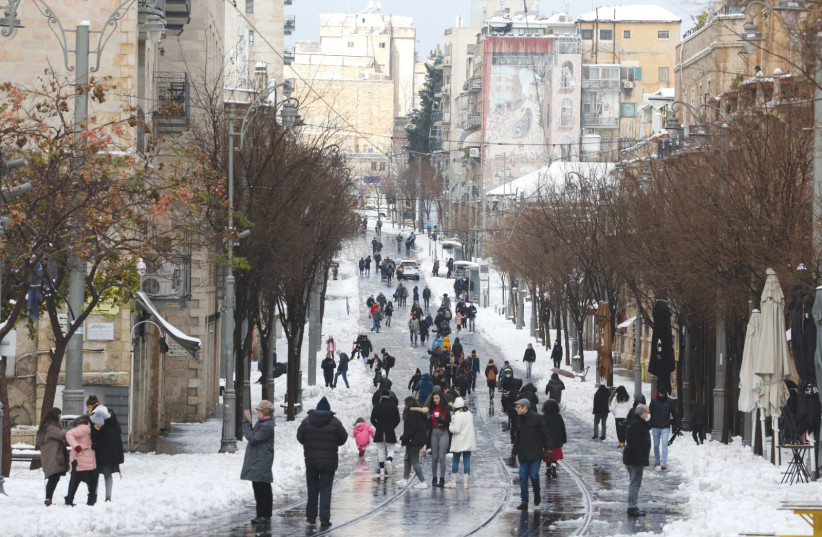

Certainly, the 10,000-plus visitors to the city last Friday, many of whom escaped the heavy rainfall lashing the coastal towns to build a snowman and chuck a few snowballs at each other, enjoyed the rare urban vista and probably shelled out a few hard-earned shekels at local cafés and other eateries while they were in town.
Sadly, as Lotan observed, they may be in for more, much more, as time goes on although, necessity compels and that will provide the municipality with plenty of opportunities for dress rehearsals. “I think that, as the weather becomes more extreme, the preparations for such events will improve. Unfortunately, these events will become even more severe.”
Only time will tell how accurate Lotan’s dystopian take is. But, as we all know, we are not being very kind to our one and only planet. As we noted, the drop in pollution during the corona lockdowns when there were far fewer cars on the roads and planes in the sky, perhaps we should reflect on that and see what we can do to obviate that scary prospect.
It would be nice to keep the municipality snowplows off the roads as much as we possibly can.
